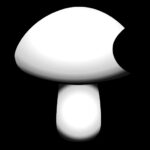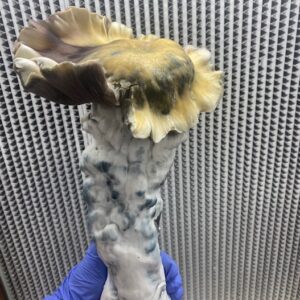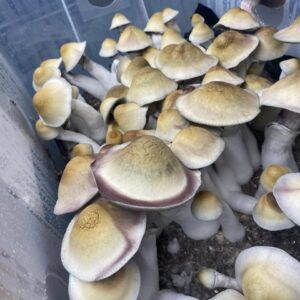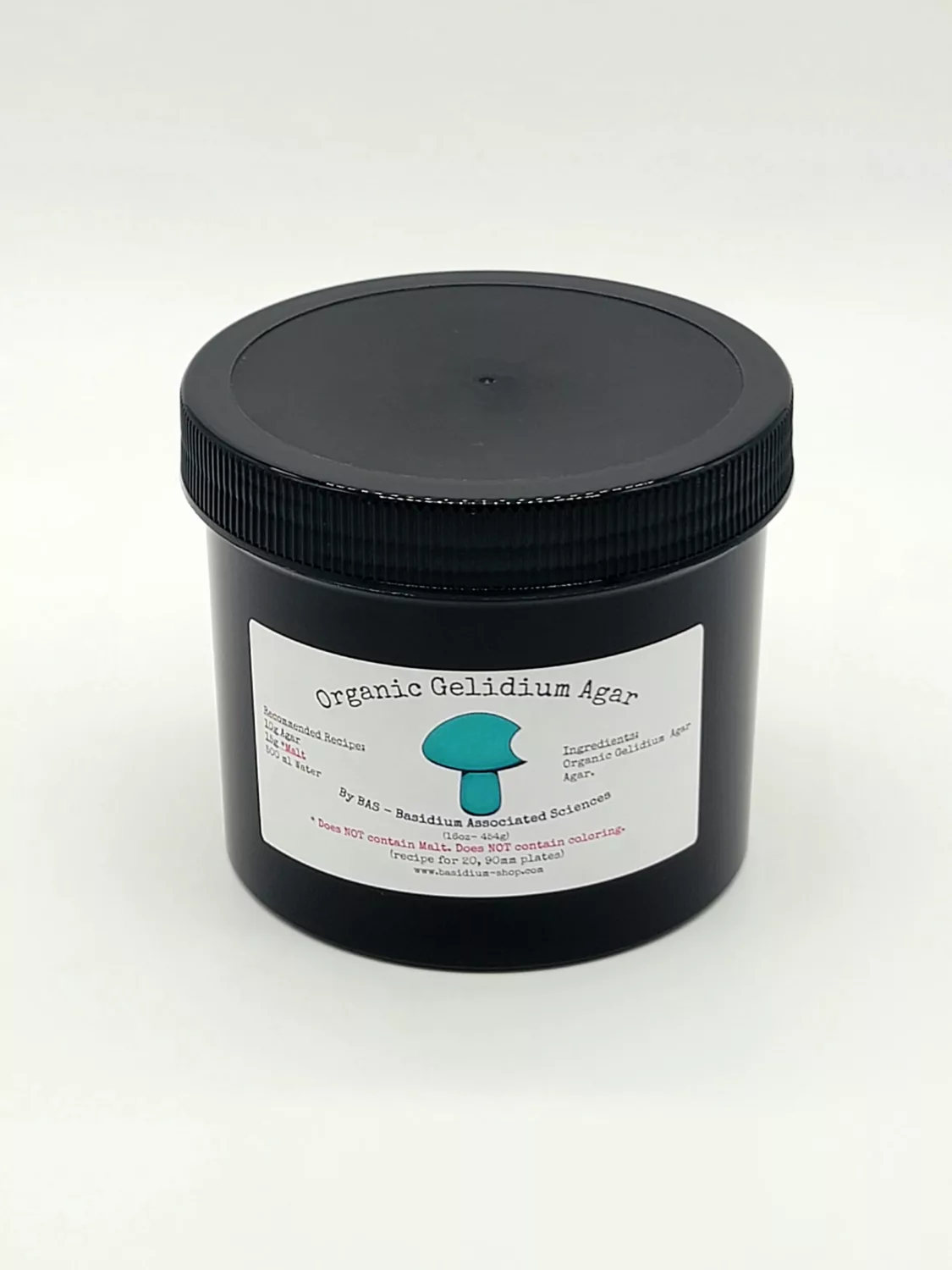“Microscopic Marvels: The Magic of Mushroom Spores and Their Role at The Spore Coop”
Mushrooms, those enigmatic organisms, have an awe-inspiring secret that only a few truly appreciate – their remarkable spores. These minuscule structures are at the heart of their life cycle and serve multiple purposes, making them a treasure trove for both nature enthusiasts and microscopy aficionados. In this blog, we’ll explore what mushroom spores are, their functions, and why they’re invaluable for microscopy use, with a special focus on The Spore Coop’s offerings.
Spores: Nature’s Tiny Miracles
Spores are the reproductive cells of fungi. They are akin to the seeds of plants, but much smaller and lighter, often appearing as fine dust when released from the mushroom’s fruiting body. These spores vary in size, shape, and color depending on the mushroom species, and each one harbors the genetic blueprint needed to create a new mushroom under the right conditions.

The Functions of Mushroom Spores
- Reproduction: The primary function of mushroom spores is to ensure the survival and propagation of the species. When a mushroom matures, it releases vast quantities of spores into the surrounding environment. These spores are carried by the wind, water, or other organisms, allowing the fungi to colonize new areas and thrive.
- Genetic Diversity: Mushroom spores contribute to genetic diversity within the fungal population. Each spore carries unique genetic information, giving rise to variations in the offspring. This genetic diversity can be advantageous in adapting to changing environmental conditions and avoiding extinction.
- Survival Strategy: Spore production is a clever survival strategy. By dispersing countless spores, fungi increase their chances of finding suitable conditions for growth. This ensures the continuation of their species, even in the face of adverse circumstances.
The Importance of Mushroom Spores for Microscopy
Mushroom spores have a special place in the world of microscopy, and this is where The Spore Coop comes into play. Let’s delve deeper into the four categories explaining why spores are crucial for microscopy enthusiasts:
1. Identification and Differentiation
Microscopy plays a pivotal role in the identification and differentiation of mushroom species, making it an indispensable tool for mycologists and enthusiasts alike. Here’s how spores contribute:
-
Unique Features: Each mushroom species possesses distinct spore characteristics, including size, shape, color, and ornamentation. These features serve as key diagnostic criteria. For instance, the spores of the Amanita genus have a unique shape and ornamentation pattern that distinguishes them from other mushrooms.
-
Species-Specific Markers: Spore characteristics act as species-specific markers, enabling enthusiasts to accurately identify mushrooms. For instance, the spores of the deadly Amanita phalloides, commonly known as the Death Cap mushroom, are markedly different from edible species like Agaricus bisporus.
-
Enhanced Accuracy: Microscopy offers enthusiasts a high degree of accuracy in identifying mushrooms compared to macroscopic characteristics alone. This precision is especially vital when distinguishing between closely related species with similar macroscopic features.
2. Taxonomy and Classification
Mushroom taxonomy and classification are intricate fields of study that heavily rely on the examination of spores. Here’s how spore analysis contributes to these areas:
-
Defining Species: Spore characteristics provide taxonomists with essential data to categorize fungi into species. By comparing spore traits, taxonomists can establish distinct fungal species and assign them scientific names.
-
Building Phylogenetic Trees: The study of spores helps in constructing phylogenetic trees, which illustrate the evolutionary relationships between different mushroom species. By analyzing spore characteristics, researchers can trace the evolutionary history of fungi.
-
Naming and Cataloging: The unique spore traits of each mushroom species are documented and recorded. This information is vital for scientific databases and herbarium collections, aiding in the systematic cataloging of fungal diversity.
3. Research and Study of Fungal Biology
Mushroom spores are an invaluable resource for researchers seeking to deepen their understanding of fungal biology. Here’s how spores contribute to scientific research:
-
Reproductive Biology: Spore examination provides insights into fungal reproduction. Researchers study spore germination and development to uncover the intricate mechanisms that govern the life cycle of fungi.
-
Ecological Studies: By examining spores in different environments, scientists can gain insights into the ecological roles of various fungi. This knowledge aids in understanding the fungi’s interactions with other organisms and their impact on ecosystems.
-
Evolutionary Studies: Spore analysis is crucial for studying the evolution of fungi. Researchers can identify ancestral and derived traits in spores to piece together the evolutionary history of fungal species.
4. Cultivation and Mycology Enthusiasts
Microscopy is an essential tool for those interested in cultivating mushrooms or simply exploring the world of fungi. Here’s how spores are indispensable in these pursuits:
-
Germination and Growth: Microscopy allows enthusiasts to monitor the germination of spores and the development of mycelium. This is particularly crucial for successful cultivation, as it helps ensure the establishment and health of mushroom cultures.
-
Contamination Detection: Microscopy enables enthusiasts to detect contamination in mushroom cultures. By examining the spores and mycelium under a microscope, they can identify unwanted molds or bacteria that may hinder mushroom growth.
-
Education and Appreciation: For those passionate about mycology, microscopy provides a means to explore the microscopic beauty of fungi. It fosters a deeper appreciation for the intricacies of mushroom life cycles and enhances the educational experience.

At The Spore Coop, we recognize the fascination and importance of mushroom spores. As one of the world’s premier spore vendors, we proudly offer a diverse range of Psilocybin and Exotic spores for collectors and microscopy enthusiasts. Our commitment to providing high-quality spore specimens allows you to explore the intricate world of fungi from the comfort of your laboratory.
Mushroom spores are nature’s precious microscopic treasures. They embody the essence of fungal reproduction, genetic diversity, and survival strategies. When examined under a microscope, they unlock the secrets of fungi and contribute to our scientific understanding. The Spore Coop’s dedication to offering these spores ensures that you can embark on your own fascinating journey into the captivating world of fungi.
